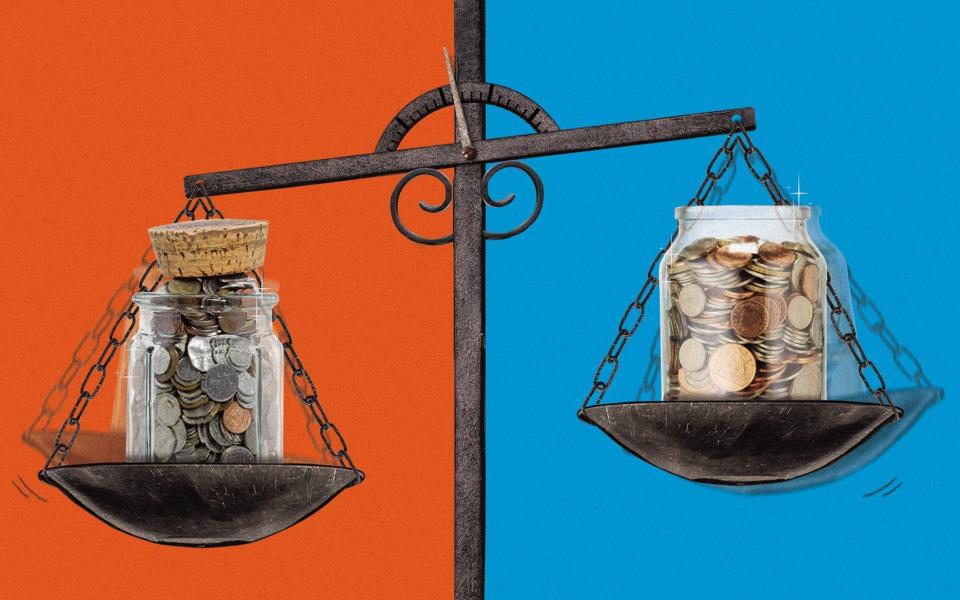The £134,000 reason pensions are better than Isas

Savers have hardly been spoiled in recent years. Interest rates have been stagnant, stock markets have suffered repeated setbacks and Isa limits have been frozen.
Although cash savings rates have started to rise more recently, for retirement savers the bigger decision has often been how to invest, rather than where to invest it.
Workers now have three competing ways to save for their retirement, each offering an unique way to invest while sheltering their cash from the taxman – pensions, stocks and shares Isa and the Lifetime Isa.
But which is the best way to boost your savings and draw on in retirement?
Boost your savings by 166pc
A pension is the first port of call for most people saving towards their pension thanks to the generous tax relief offered to savers.
Everyone, even non-earners, receive a tax break when saving into a pension, and those who are employed will often have contributions matched by their employer, up to a certain level. This typically makes it far more beneficial than saving into a stocks and shares Isa in financial terms.
The catch is that, unlike Isas, wealth held in a pension can be only accessed from 55, and this will rise to 57 from 2028. The price a saver will pay for the greater flexibility of an Isa is significant, however, as there are fewer tax breaks on offer. Isas are also subject to inheritance tax when the taxpayer dies and wealth is passed on, unlike pensions.
Analysis by wealth manager Quilter showed that a worker on £80,000 saving £1,000 a month into their Isa would have a nest egg of £201,781 after 20 years. This assumes 4pc growth, inflation of 2.5pc and charges of 1pc.
However, the same saver would have a pot of £336,301 if they used a pension, because of the significant boost from higher-rate tax relief. This total is 66pc, or £134,520, more than an Isa saver.
The comparison is even more stark when you factor in employer pension contributions. If we assume the same person received a matched contribution of £1,000 a month from their employer, their nest egg would be worth £538,082 after 20 years. This is 166pc more than the Isa saver and 60pc more than the self-employed worker who does not get employer contributions.
Jon Greer, of Quilter, said: “The inherent benefits of pensions can significantly boost the growth of your retirement nest egg, making pensions the best choice for the majority of your retirement savings.
“Nonetheless, if you want to retire early or if you have other plans, the tax-free nature of Isas make them an excellent savings vehicle alongside pensions too.”
Mr Greer advised savers to utilise both pensions and Isas to take advantage of the tax breaks.
What about Lifetime Isas?
The Lifetime Isa was launched in 2017, among its targets was the self-employed, who do not benefit from employer contributions when saving into a pension.
However experts warned the take-up had so far been low due to the restrictions placed on the account. Savers must be aged between 18 to 39 to open an account and limits are capped at £4,000 a year, much lower than the £20,000 annual Isa allowance.
Savers can deposit £4,000 a year into a “Lisa” and will receive a 25pc bonus, worth up to £1,000 a year. This is an effective tax break of 25pc and is most beneficial for basic-rate and non-taxpayers.
Will Stevens, of wealth manager Killik & Co, said: “Non-earners may be limited to just £2,880 into their pensions in any one year. As there is no restriction on where the funds come from, an individual whose spouse is a high earner, may be able to benefit from transferring money between spouses (which are free of any tax implications) and then putting that money to work inside both a pension and Lisa.”
A non-earner – who would only normally be able to put £2,880 into a pension (topped up to £3,600 by the government) – could benefit from putting another £4,000 into a Lisa which would be topped up by an extra £1,000.
Mr Stevens said this strategy would more than double the tax boost available to a saver.

 Yahoo Finance
Yahoo Finance 